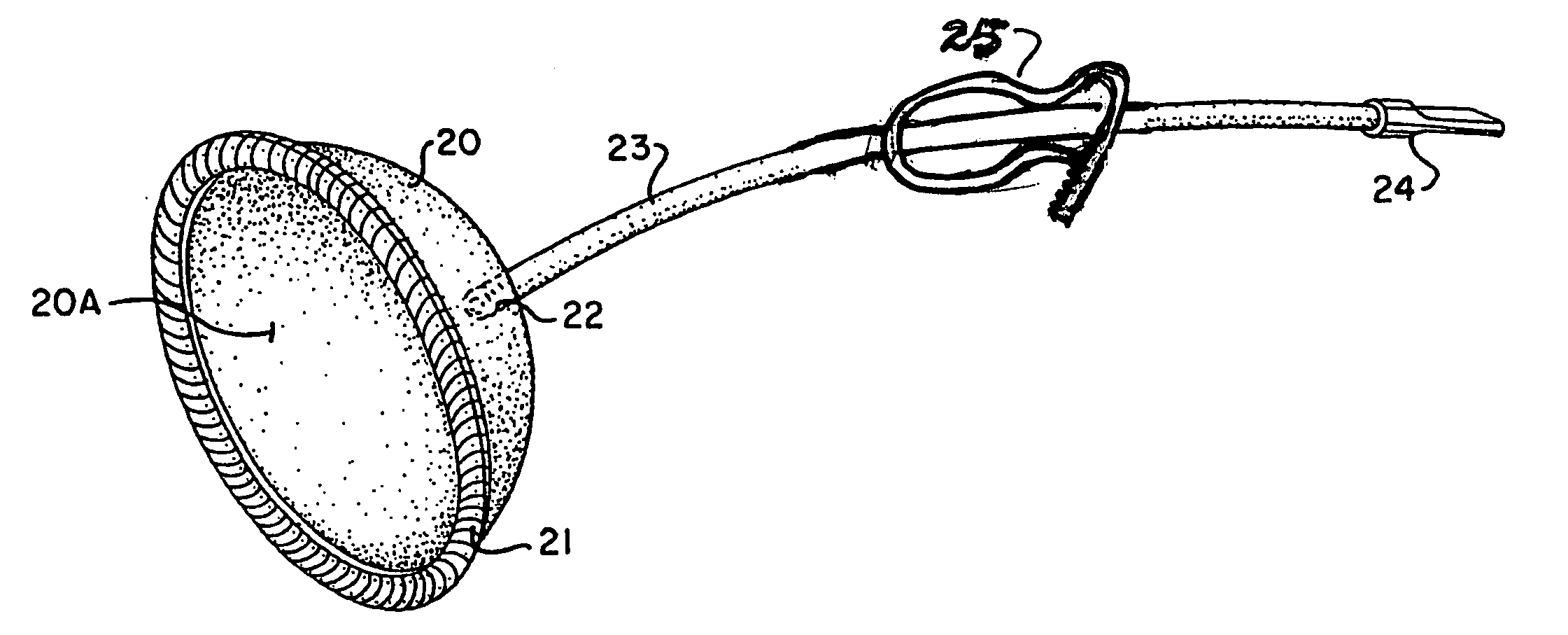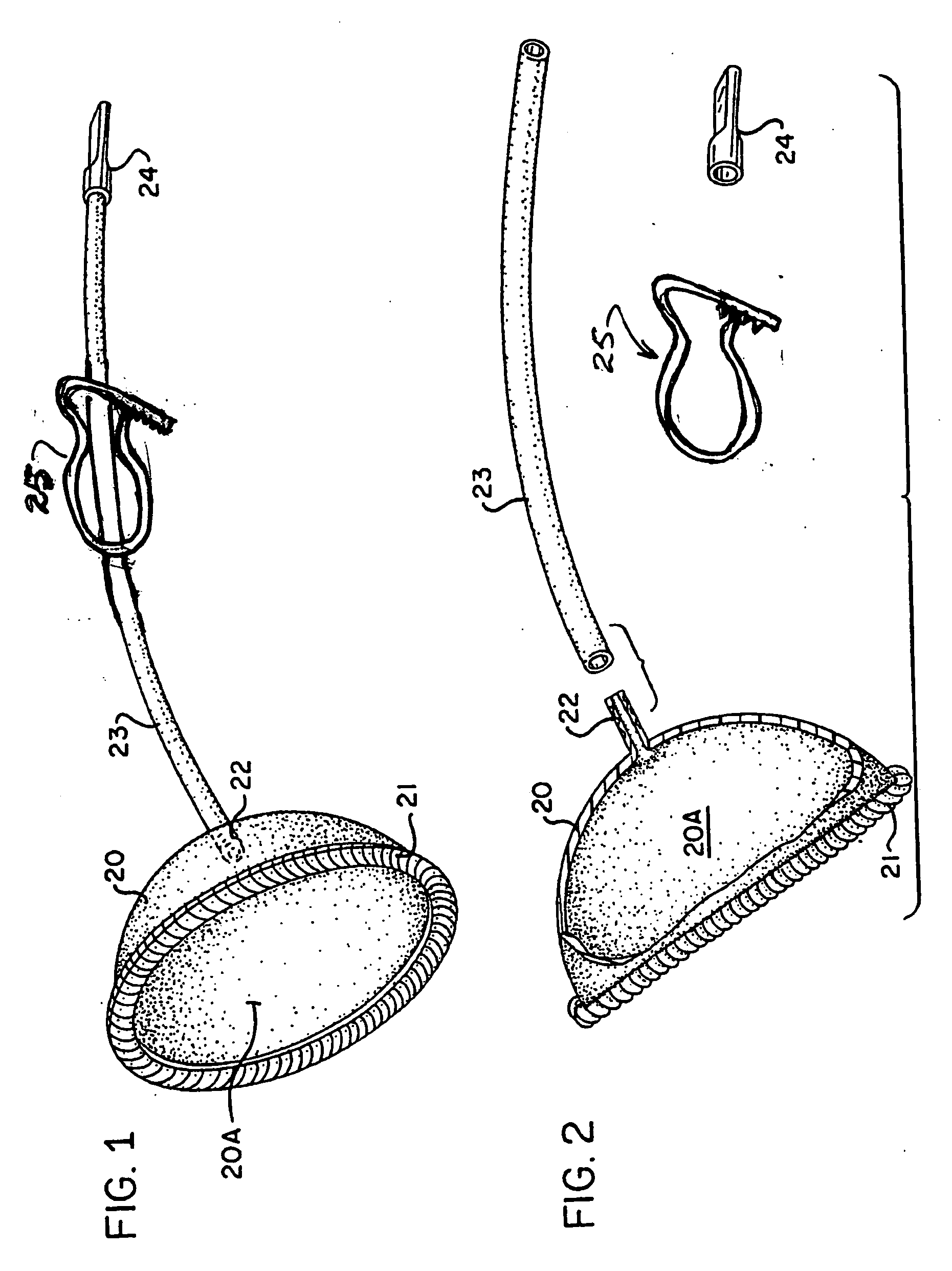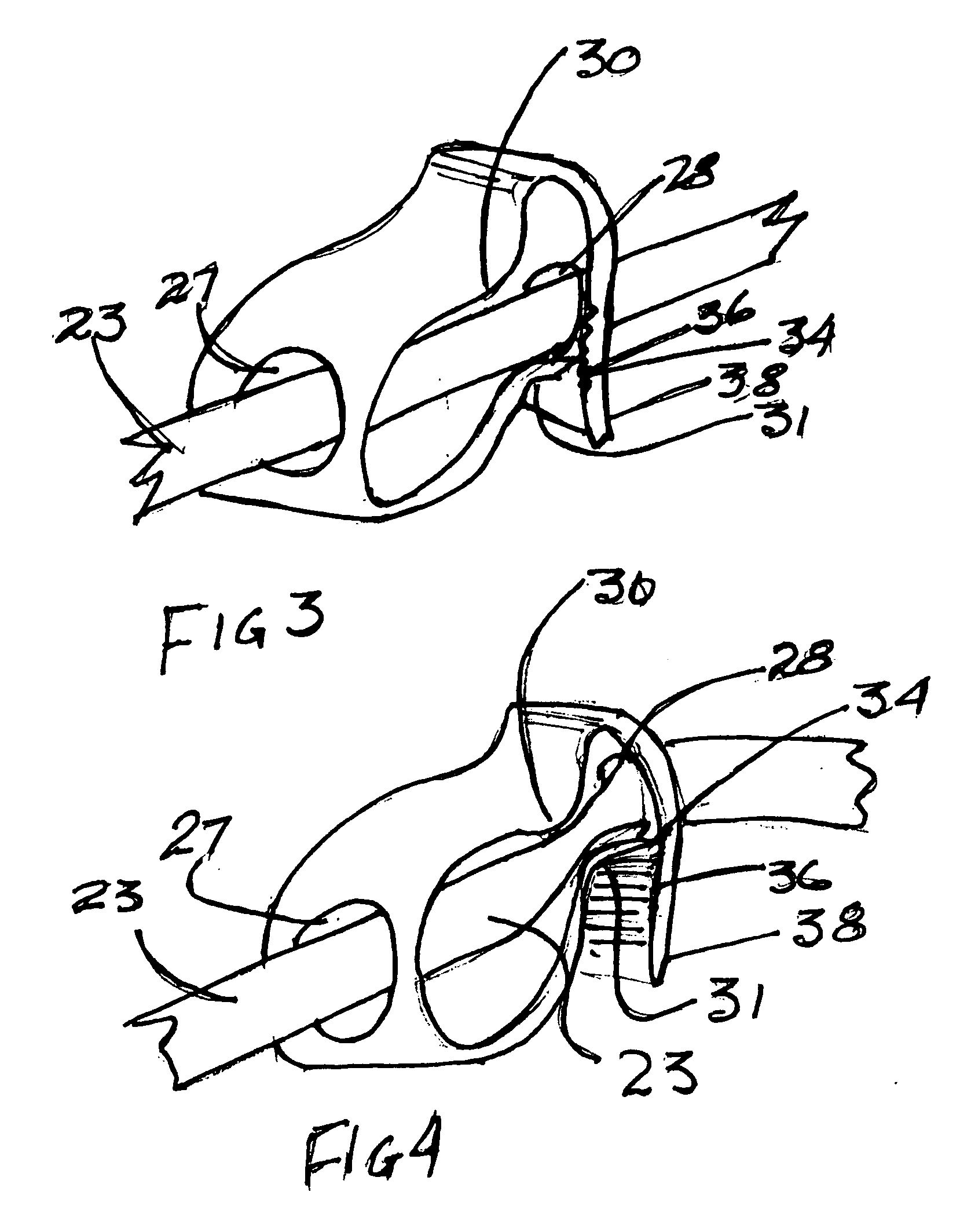Breast tissue expanding device
- Summary
- Abstract
- Description
- Claims
- Application Information
AI Technical Summary
Benefits of technology
Problems solved by technology
Method used
Image
Examples
Embodiment Construction
[0029] An understanding of the present invention can be best gained by reference to FIGS. 1 through 6. The present invention employs a hollow dome 20 which is to be placed over, and is spaced from, the breast tissue, making contact only with the surrounding skin on the chest wall of the user.
[0030] The hollow dome 20 is preferably hemispheric in profile, with a hollow interior 20a and a surrounding rim 21 which, in use, contacts the surface of the chest around the breast. The rim 21 may be textured in design and pliable to allow leak proof attachment to the chest when a vacuum is applied without making contact with the skin of the breast. It is also contemplated that a soft sealing material, such as a closed pore foam or other similarly functioning materials may be applied to the rim to aid in sealing. A tubing connector 22, located approximately at the top of the center of the hollow dome 20, has a pliable breathing tube 23 attached thereto. A tubing clamp 25 is mounted on the tub...
PUM
 Login to View More
Login to View More Abstract
Description
Claims
Application Information
 Login to View More
Login to View More - R&D
- Intellectual Property
- Life Sciences
- Materials
- Tech Scout
- Unparalleled Data Quality
- Higher Quality Content
- 60% Fewer Hallucinations
Browse by: Latest US Patents, China's latest patents, Technical Efficacy Thesaurus, Application Domain, Technology Topic, Popular Technical Reports.
© 2025 PatSnap. All rights reserved.Legal|Privacy policy|Modern Slavery Act Transparency Statement|Sitemap|About US| Contact US: help@patsnap.com



